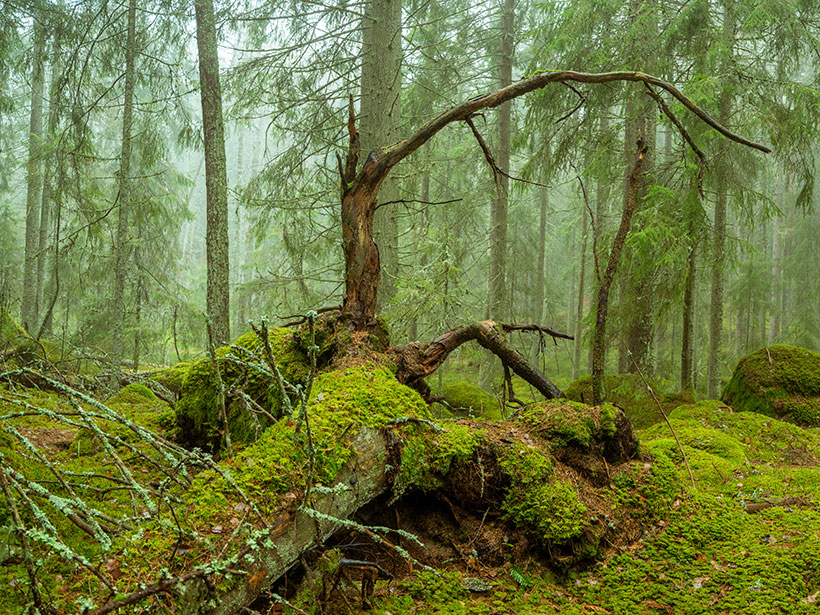As world governments draw up recovery plans in response to the coronavirus 2019 (COVID-19) pandemic, environmental concerns risk being shunted aside as leaders default to business-as-usual solutions to revive their economies. But in Europe, researchers and policy analysts have recently voiced cautious optimism, as the European Union (EU) appears to be sticking by commitments outlined in its Green Deal.
Devised and rolled out last year, the European Green Deal is a policy framework to achieve net zero carbon emissions by 2050 within the bloc of 27 EU nations.
The EU has pushed ahead with the launch of its Biodiversity Strategy for 2030, which will help shape how the Green Deal is implemented over the next decade. Key commitments include increasing the amount of legally protected land, restoring degraded ecosystems, and creating new green spaces in urban environments.
Currently, only 26% of the EU’s land and 11% of its marine zones are legally protected areas; both will increase to 30% under the new plans. A third of these protected zones, including all remaining primary and old-growth forests, will be subject to even stricter protections.
To help rejuvenate freshwater ecosystems, the plans propose that at least 25,000 kilometers of rivers be restored to free-flowing status by 2030. This restoration includes the removal of obsolete dams and the restoration of floodplains and wetlands.
Protected Trees, Political Realities
Some ecologists and policy analysts, although positive about the Biodiversity Strategy, still have concerns about how it will work in practice.
“Targets to place more areas of land under protection make a good headline and intuitively make sense.” But questions still arise.
“Targets to place more areas of land under protection make a good headline and intuitively make sense. But our questions are, Where will the space be found? Who might have to be moved or displaced—if anyone—to create them? And who will pay for it?” said Rosaleen Duffy, a political ecologist at the University of Sheffield in the United Kingdom and principal investigator at Biodiversity and Security (BIOSEC), a project funded by the European Research Council.
Duffy is concerned that it may be cheaper and more politically acceptable to establish protected areas in Eastern Europe, placing a disproportionate onus on rural communities in those EU nations.
Currently, the EU provides roughly 60 billion euros per year in farming subsidies through its Common Agricultural Policy, where much of the money is spent on intensification of production. With its Biodiversity Strategy, the EU is introducing policies and funding that address some of the negative impacts of farming on the environment, such as clamping down on chemical pesticides. The strategy states that at least 20 billion euros per year should be provided to help this transition, with a significant chunk coming from programs in the next long-term EU budget (2021–2027).
This budget commitment has been praised by the World Wide Fund for Nature (WWF), which urged the EU to make this spending commitment more concrete and to involve citizens and nonprofit organizations to implement the plans. “The Biodiversity Strategy spells out what WWF deeply believes in: that nature protection and restoration will only lead to lasting positive change if it is planned and implemented with genuine participation across society,” said Irene Lucius, WWF’s regional conservation director for Central and Eastern Europe.
“I am optimistic it is finally a real step with target numbers and significant funding for the protection of our biodiversity.”
András Báldi at the Centre for Ecological Research in Budapest, Hungary, welcomed the new strategy: “I am optimistic it is finally a real step with target numbers and significant funding for the protection of our biodiversity.”
Péter Ódor, one of Báldi’s colleagues, believes that legally protecting Europe’s oldest woodlands is a crucial step in preserving European biodiversity. Undisturbed forests contain “dead wood that is the main microhabitat for about 40% of the forest biota,” he said. After logging or other disturbances, “the restoration and creation of dead wood in relatively young secondary forests could not substitute for these old-growth stands.”
In Europe, old-growth forests account for roughly 0.7% of the continent’s forests, with the majority found in Finland, the Balkans, and the Carpathian Mountains. Each nation classifies its forests differently, and this inconsistency will likely intensify debate with the introduction of this new legislation, according to Duffy and colleagues on the BIOSEC team. They are concerned that without adequate compensation mechanisms, nations are unlikely to rush to designate forests as protected areas.
—James Dacey (@JamesDacey), Science Writer
Citation:
Dacey, J. (2020), Europe launches biodiversity strategy for the coming decade, Eos, 101, https://doi.org/10.1029/2020EO145758. Published on 17 June 2020.
Text © 2020. The authors. CC BY-NC-ND 3.0
Except where otherwise noted, images are subject to copyright. Any reuse without express permission from the copyright owner is prohibited.

